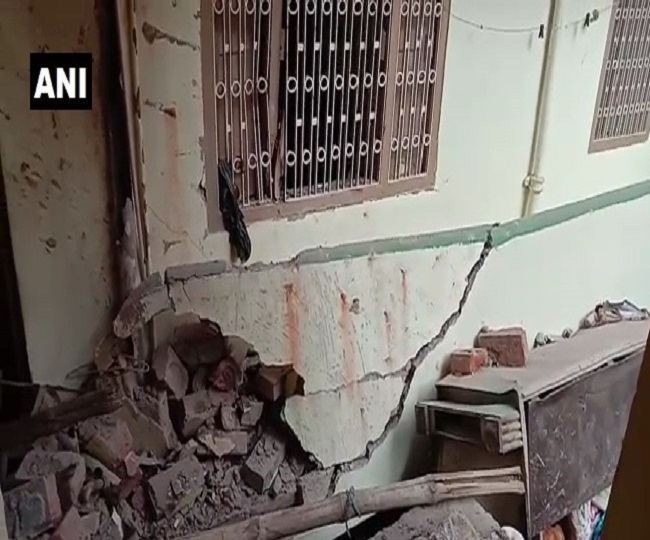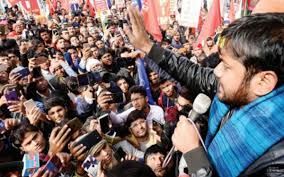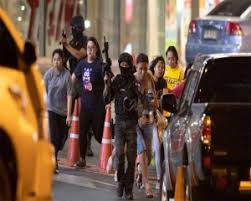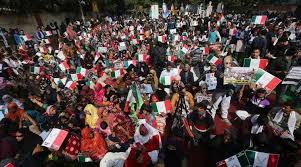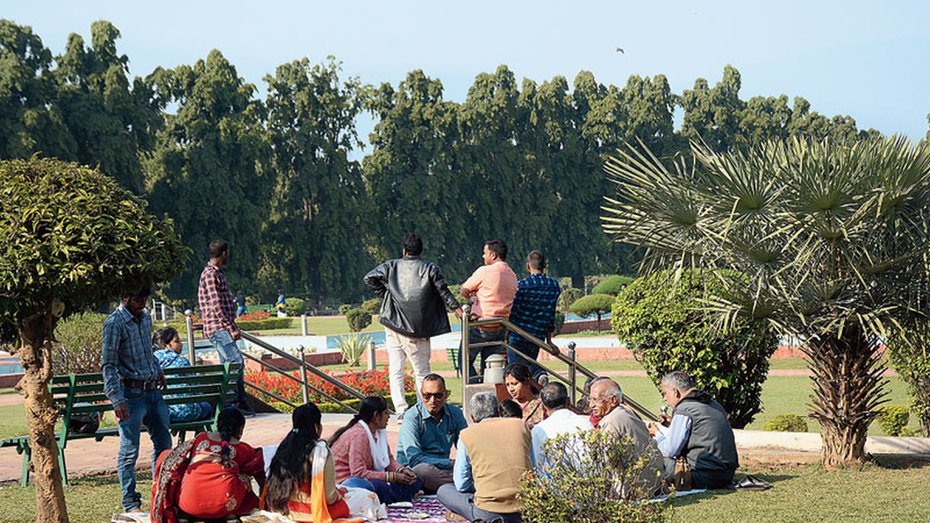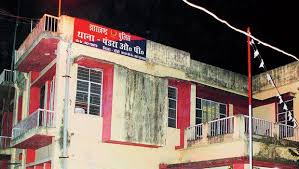Source: indianexpress.com
As Shaheen Bagh took centrestage in the high-octane campaign in the Capital, The Indian Express travelled from West Bengal, Ground Zero of the NRC debate, to UP, which saw the most deaths in the crackdown. To find out how Shaheen Bagh plays out, how the protests unite — and divide
At precisely 5.17 pm on January 30, at a days-old dharna that calls itself “anishchitkaleen (indefinite)” even as it hugs, precariously, the edge of the Gaya-Sasaram highway in Bihar, participants from village Sherghati Hamzapur lit candles and observed a two-minute silence.
The flickering lights and the sudden hush in the winter dusk were a mark of respect for the Father of the Nation, assassinated by Nathuram Godse 72 years ago.
The banner behind a small table that doubled as a stage bore portraits of Gandhi, Ambedkar and Maulana Azad. Miniature Tricolour flags fluttered overhead, and posters said No CAA, No NRC, No NPR. Another poster bore a more fundamental assertion: “Jahan paida hue wahin dafan bhi honge (we will be buried in the land we were born in).” And a touch of the apocalyptic: “Jeet gaye to watan mubarak, haar gaye to kafan mubarak (if we win we win our homeland, if we lose we lose everything).”
Yet, more insistently than apocalypse or Shaheen Bagh, the protesters of Sherghati Hamzapur invoked India’s Constitution.
“We believe that Articles 14, 15 and 21 are violated by the (citizenship amendment) law. If you are giving someone citizenship, we have no problem, but you are playing with Article 15,” said Masroor Alam, referring to the constitutional right against discrimination on grounds of religion.
Alam, who as a “JP senani” was jailed during the Jayaprakash Narayan-led uprising against the then Congress government in the ‘70s, is convenor of the “Samvidhan Bachao Nagrik Morcha”, an outfit recently floated to oppose the citizenship law that fast-tracks citizenship for six minorities from three neighbouring countries while excluding Muslims, as well as the proposed National Register of Citizens, which would set cut-off dates, demand proof of citizenship.
Both Alam and his fellow protesters make an effort to frame their opposition as one that does not speak only of, or only to, Muslims. “Ghar beh jaate hain, paani kissi ko bakshta nahin (floodwaters don’t spare anyone). The poor, SCs-STs, don’t have documents,” said Noor ul Huda, retired government employee.
The sit-in by the highway was smaller, but not very different from that in Shantibagh in Gaya town, over 40 km from there, or at other sites farther away that The Indian Express visited in the journey from Kolkata to Lucknow — the large protests in Kolkata’s Park Circus, Gaya’s Shanti Bagh and Old Lucknow’s Ghanta Ghar, to the not-so-large dharnas in Dhanbad’s Wasseypur, Mohalla Bhandaridih in Giridih and Bhai Khan Ka Bagh in Sasaram.
For one, they are all located in Muslim-dominated localities — in a public maidan or makeshift clearing, or sliced by the busy road, as in Bhandaridih.
But if the locale is “Muslim”, the language of the protest at each and every site asserts — even as it seeks — larger solidarities.
At Kolkata’s Park Circus, many emphasise that the maidan hosts both the namaz and the pooja pandal. Posters and banners frame signs and symbols of the Constitution and the founding fathers, not any political party or religion. A banner spells it out at Park Circus politely: “Kindly leave your party affiliation and banner outside the gate. Thank you.”
Across dharnas, there is a notable presence of women, many with children who run around and play or read their schoolbooks — some recite a poem in the break between speeches. Many women say they have not stepped out of home to participate in a public protest before this.
But most of all, the similarity across the anti-CAA-NRC-NPR protests is that they are not simply about the CAA, NRC or NPR.
Even as they express opposition to a citizenship law seen as discriminatory, and to a proposed nationwide NRC process that grievously fumbled in its first rollout, they are more than just about law and an undue process. They are, really, about a distilled message and perception — of exclusion — that has travelled far and touched deep in India’s minority community. And become the centre of a vortex of insecurities.
In 2014, the election of the Modi government with a large majority, and its re-election last year stoked these insecurities.
But what appears to make the CAA-NRC moment different for Muslims, seemingly across gender, place and profession, is that the law and the proposed register strike at that most essential of ideas, most primal of comforts — home and citizenship.
It also comes when distrust of the Modi government deepened on the back of decisions that were either seen to target Muslims — triple talaq and abrogation of Article 370, and the court’s handing over of the site of the demolished masjid in Ayodhya for the mandir — or had hurt vulnerable sections of the minority community disproportionately, like the disruption of demonetisation and bungled transition to GST. “Humko bedakhal aur beghar kiya ja raha hai. Yeh wajood ki ladai hai (We are being ousted. This is about our very existence),” is the underlying strain.
Nobody knows where this moment will go, and how it will end.
But for now, the legal fact that the CAA provides and doesn’t take away citizenship offers no comfort. Prime Minister Modi’s statement that there is no talk of an NRC holds little assurance. Minority fears and anxieties have the sharpest edge in West Bengal, where the border with Bangladesh and Assam’s botched NRC loom closest, and the CAA-NRC have become the prime currency of political exchange between the ruling TMC and challenger BJP.
At the Park Circus Maidan dharna, on since January 7, Baby Razia, who divides her time between a job in the corporation and the protests, says, “We should have come out before. I have voter ID, Aadhaar, PAN, now where will I get the birth certificates of my parents? I recently discovered Rs 17,000 that I had kept away from everyone’s gaze in my closet, till demonetisation made it useless. We tolerated everything: Notebandi, GST, triple talaq, mandir. Now, look at Assam, will we have to go to a (detention) camp?”
Not far, in Ripon Street, where black tangles of electricity cables overhang neighbourhoods and interrupt the sky, Ashrafi, who is preparing for the civil services, says she, too, attended the Park Circus protest. “I have never done this before. But when I went to meet a principal of a college dressed in a burqa recently, the watchman said to me, are you carrying a bomb. Why would he say that? This government’s nationalism is measured by the anger it shows against Pakistan.”
“Women are coming out more because of demonetisation ka khunnas (exasperation). And because they think it has now come down to their children,” says Anjum, who ghostwrites novels.
In Eksahara village in Howrah, Jahid Malik asks: “If in Assam, even the name of a Kargil hero was left out of the list of citizens, what is the guarantee my name will be in it?”. And “if centuries of proof couldn’t save the Babri masjid, will we be able to protect our citizenship by showing 70 years’ worth of documents?” says Mehraj Alam.
Away from Kolkata and Bengal, too, opposition to CAA-NRC remains the thin end of a bulkier fear in the Muslim mohalla in Jharkhand, Bihar and UP.
At the dharna which began on January 2 in Wasseypur, Dhanbad, under a shamiana festooned with saffron, green and white balloons, Abu Talha, part-time teacher, says, “This will be a long fight. Because this is the biggest humiliation of all. Can documents be the criteria of belonging?”
In village Bagodar of Giridih district, Mohammad Ansari, a driver who has become jobless recently, says, “There was talk here in Jharkhand that we would have to show land records before 1932 to prove we are original Jharkhandis, but that died down. Now the Centre has started this.” Both Hindus and Muslims have reason to fear, says Mohammad Ismail, but “sarkar ki manmani (government whim)” hurts Muslims more — because “they can dub us bahri ghuspaithiye (outsiders and infiltrators)”.
There is a new anxiety in her household, says Sadaf Taquaddus, a student in Sasaram who works as a radio announcer in Prasar Bharati. “My brother studied in Jamia, still lives in Jamia Nagar. We want to live with everyone without apprehension. My grandmother in Jehanabad adopted a Yadav boy. I don’t want that India to change.”
Sadaf says she recently sat for the teachers’ eligibility test. “My job prospects are already dim. This is what needs attention. We have already given our fingerprints, our biometrics.”
And “what is the guarantee that you (government) will accept them (documents)?”, S N M Rizvi, businessman, points to the core of the disbelief that has been given a name by the CAA-NRC.
